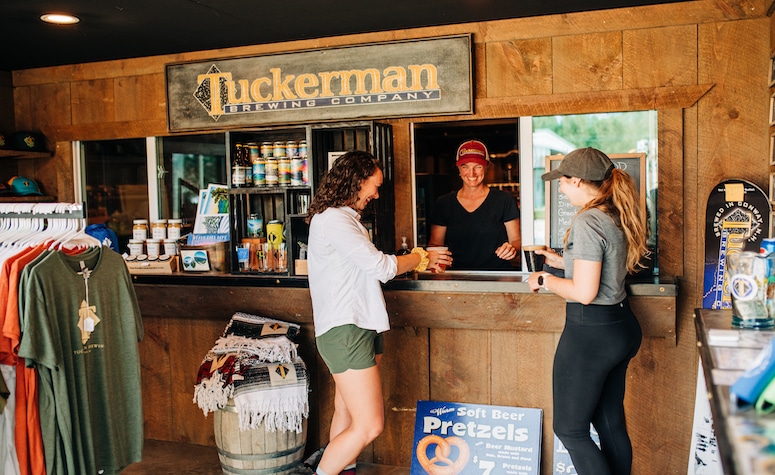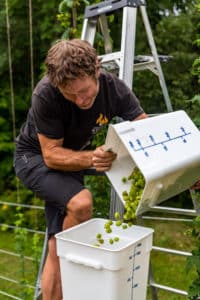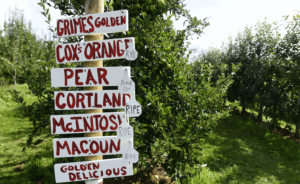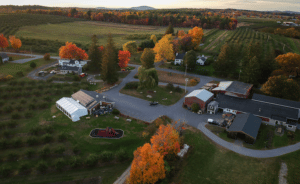
The smell of freshly-picked hops greeted me as I arrived at Paul’s house, located within walking distance of North Conway’s newest brewery, Ledge Brewing Company. It was a crisp and sunny afternoon in September, and Ledge’s two owners, Ian Ferguson and Silas Miller, along with head brewer Cody Floyd, had gathered with a few friends at the house to barbecue, sample beers, and fill buckets with freshly-grown hops to be used in an upcoming brew. The craft brewery was embracing community, locally-sourced ingredients, and adventurous experimentation all at the same time.
Prior to the late 1990s, beer consumption was largely focused on simple and mass produced beers. Beer drinkers rarely paid attention to the type of hops that went into their pilsners, where the ingredients came from, or the production process used. All that mattered was how cold, crisp, and refreshing their beverage of choice was. The simple flavor profiles of beers like Budweiser, Miller Light, and Heineken met the bulk of demand.
But at the turn of the century, a monumental shift began. Craft breweries — smaller scale, independent breweries that can be broken down into subcategories of microbrewery, taproom, brewpub, and regional brewery — began popping up across the country. In fact, the Brewer’s Association reported 9,124 craft breweries in the U.S. in 2021, up from 1,487 only two decades earlier. The most significant growth took place between 2010 and 2021, with nearly a 514 percent increase.
The smaller-scale nature of these breweries allowed them to experiment with fewer traditional domestic methods of brewing, putting creative spins on European-style beers. Before long, craft beer connoisseurs were debating how to differentiate the production process and flavor profiles of New England and West Coast-style IPAs, while craft brewmasters were experimenting by adding various locally-sourced fruits to their wild-fermented sours and farmhouse ales.





